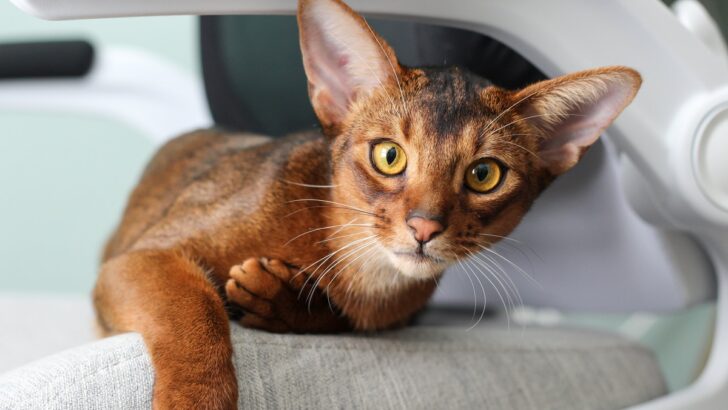Along with hieroglyphics, obelisks, and geometric art, cats were a huge part of ancient Egypt. Cats that dwelled along the Nile River were, at first, adopted as vermin predators and gradually became symbols of divinity and protection. Felines were always respected, but what are the most famed Egyptian cat breeds nowadays?
When referring to Egyptian cat breeds, we need to underline the fact that they’re among the most ancient breeds ever. Egypt happens to be one of the places of origin of domesticated cats. We believe that domesticated cats developed from small wildcats around the area of Egypt as far back as 1500 B.C.
Egyptians used the African Wildcat, a small wildcat species with sandy fur, to create domestic cats. African Wildcats might not be domesticated nowadays, but they’re considered one of the first Egyptian cat breeds because they’ve done their due diligence to create the cats we know and adore today.
Now, does that mean that all cats come from Egypt? Not exactly. While the ancestors of many modern cat breeds can be traced back to ancient Egypt, very few of them come specifically from Egypt. We’d add that not all breeds considered Egyptian are even from the area of ancient Egypt.
Whether they were worshiped as gods or seen as representations of divine aspects of gods, cats were an integral part of ancient Egyptian life. Based on mummified cats discovered in tombs alongside humans, we’re led to believe that they carried an important role in the afterlife, too. But, what’s the tea on that?
What was the cultural significance of cats in ancient Egypt?
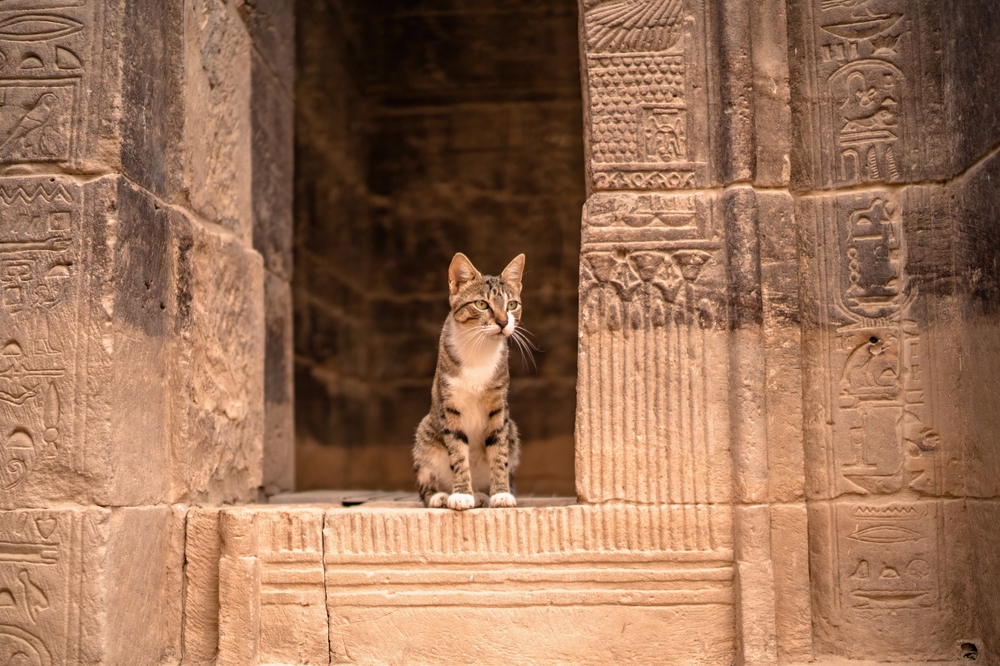
Cats and ancient Egyptians seem to have shared an unbreakable bond. Cats are documented as living in ancient Egypt more than 3,000 years ago. With a little help from paintings on the walls of tombs, we know that cats were used for more than one purpose.
First things first, ancient Egyptians saw cats as mutually beneficial companions. Cats were great at protecting their homes from snakes, scorpions, and other dangerous animals that would find their way inside during warm, summer days. Cats were often depicted sitting chasing birds and playing, too.
Furthermore, cats provided companionship in the afterlife. After spending their entire existence with their owner, cats were buried alongside them to keep them company in the afterlife, too. And we know that because cats were included in tomb paintings that typically depicted the deceased’s family and titles.
We can’t forget that cats were often mummified because ancient Egyptians believed that gods could inhibit the bodies of cats. While the killing of cats was forbidden in ancient Egypt, mummification was allowed and encouraged. Cats served as an everyday reminder of the power of the gods.
Finally, ancient Egyptians didn’t worship cats. Ancient Egyptians held cats in such high regard because their kings kept giant cats, dressed them in gold, and let them eat from their plates. Although members of the lower classes weren’t able to do the same, they honored cats in other ways.
What are the most famed Egyptian cat breeds nowadays, anyway?
What are the most famed Egyptian cat breeds nowadays?
1. Egyptian Mau

Starting with one of the most popular, prominent Egyptian cat breeds out there, the Egyptian Mau, these mysterious moggies are a sight for sore eyes. With a stunning, spotted coat, a long, lean, and muscular body, and a “scarab beetle” marking or an “M” shape on their forehead, Egyptian Maus are simply awesome!
We might not know much about Egyptian Mau’s history, but we do know that these curious creatures can be traced back to ancient Egypt thanks to the written records and paintings that depict cats with a similar (or the same!) appearance.
Egyptian drawings show heavily spotted cats with the same mascara markings and spotted patterns seen on the modern Egyptian Mau. Whatever the case might be, Egyptian Mau cats drew worldwide attention when an exiled Russian princess brought three Egyptian Maus with her to New York City in 1956.
2. Chausie

Egyptian Mau cats might be everyone’s cup of tea, but Chausie cats are one of the most underrated Egyptian cat breeds out there. Whether that’s because they’re not as famous as some of the other breeds or because they’re a hybrid rather than a “natural” breed, we don’t know for sure.
We do, however, know that Chausie cats deserve everyone’s attention because they’re affectionate, appreciative, and pretty freakin’ cute. They were created by crossbreeding domestic cats and small wildcats known as jungle cats that were revered by ancient Egyptians.
Chausies are considered an American breed because they were created in the United States in the 1990s, but their heritage ties them directly to Egypt. Abyssinian cats, another Egyptian cat breed, are a part of the equation, too, and that explains why they’re oftentimes deemed “Abyssinians on steroids.”
3. Abyssinian
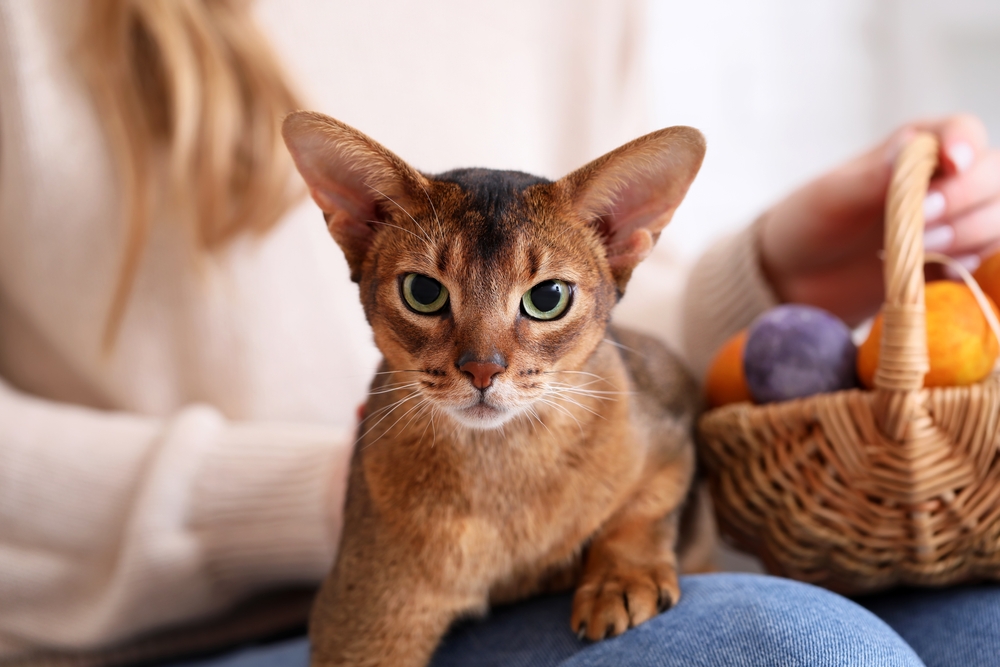
Abyssinian cats are the embodiment of everything Egyptian cat breeds stand for – they’re ancient, athletic, and visually striking. With an Abyssinian cat as a pet, you’re guaranteed to spend most of your time running around your apartment, playing with her, and trying to prevent her from running out on you.
With a wild nature and a tendency to roam around, Abyssinian cats are deemed high-maintenance, but they’re worth your while nonetheless. Small, shorthaired Abyssinians are one of the oldest cat breeds out there, but they’re surrounded by mystery. We’re not 100% sure exactly where they came from.
Because of Abyssinian’s striking resemblance to the cats depicted in ancient Egyptian hieroglyphs, they’re believed to be Egyptian, too. Pet parents, Egyptian cat breed devotees, and cat connoisseurs identify the Abyssinian cat’s country of origin as Egypt or Ethiopia, formerly known as Abyssinia.
4. Savannah
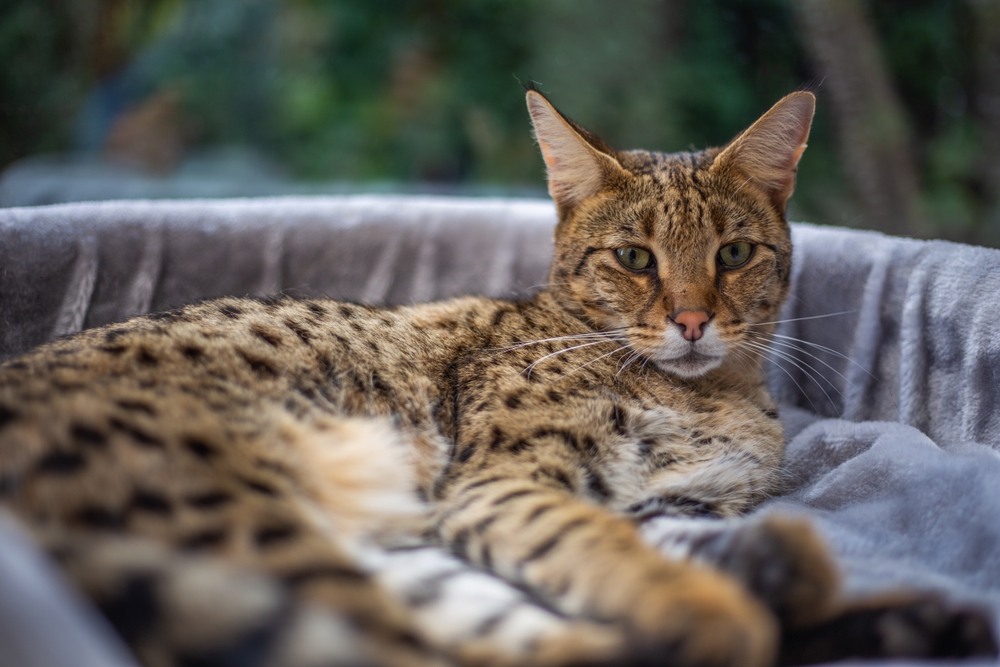
With large perked ears, long legs, and a spotted coat, Savannah cats are the closest you can get to owning a wild cat without getting arrested for breaking the law.
We’re kidding, we’re kidding – regardless of what they look like, Savannah cats are far from wild. Savannah cats were developed in the United States in the 1980s by crossing a small, African wildcat species called the serval with a domestic cat, namely Siamese.
While technically not Egyptian cats, Savannah cats are considered somewhat Egyptian because of their ties to wild servals. Whether you’re planning on adopting a Savannah cat or you’re already chasing the wild thing around your apartment, know that Savannah cats are BIG, with some specimens reaching up to 25 lbs in weight.
5. Sphynx
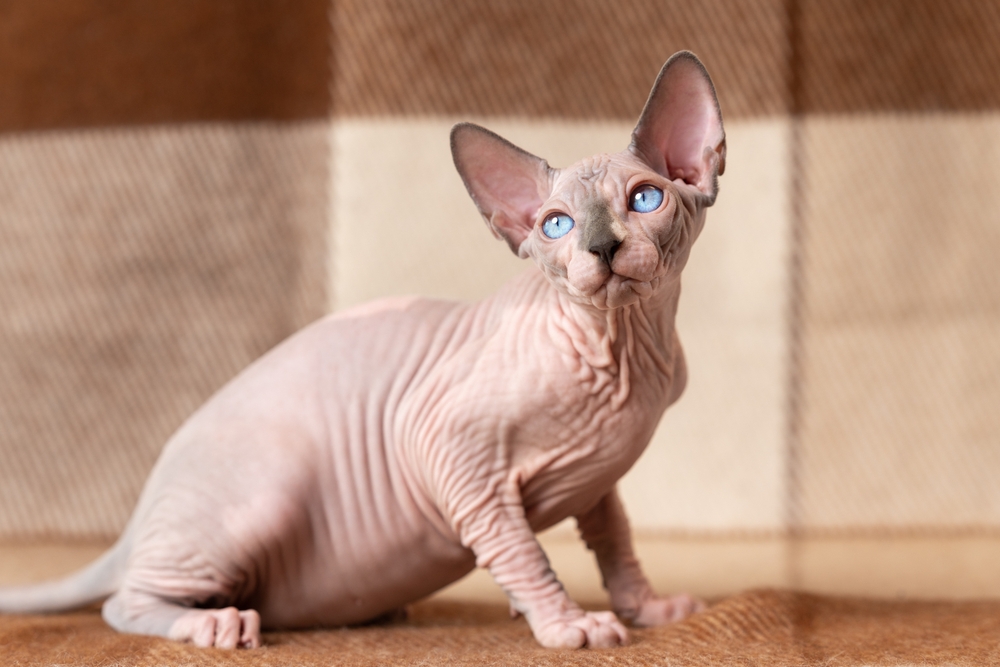
We’ve all heard of Sphynx cats, whether that’s because they’re adored for their affectionate, appreciative natures or hated for their strange appearance. Whatever the case might be, Sphynx cats are famous for their nearly nude appearance, but they’re much more than meets the eye.
Sphynx cats are Egyptian, right? Wrong. We couldn’t pass on the opportunity to talk about Sphynx cats because they’re one of the few breeds that are widely believed to be Egyptian but aren’t actually tied to ancient Egypt. Sphynx cats are Canadian, to be exact.
When a domestic shorthair cat gave birth to a hairless kitten named Prune, Canadian breeders decided to breed the curious creature with a Devon Rex in an attempt to create a hairless breed. When the first hairless kitten was born, it was named the Canadian Hairless Cat.
With time, the Canadian Hairless Cat was renamed to the Sphynx because of the resemblance to ancient Egyptian depictions of cats, as well as the mythical sphinx, a creature with the head of a human, body of a lion, and wings of an eagle.
6. Shirazi
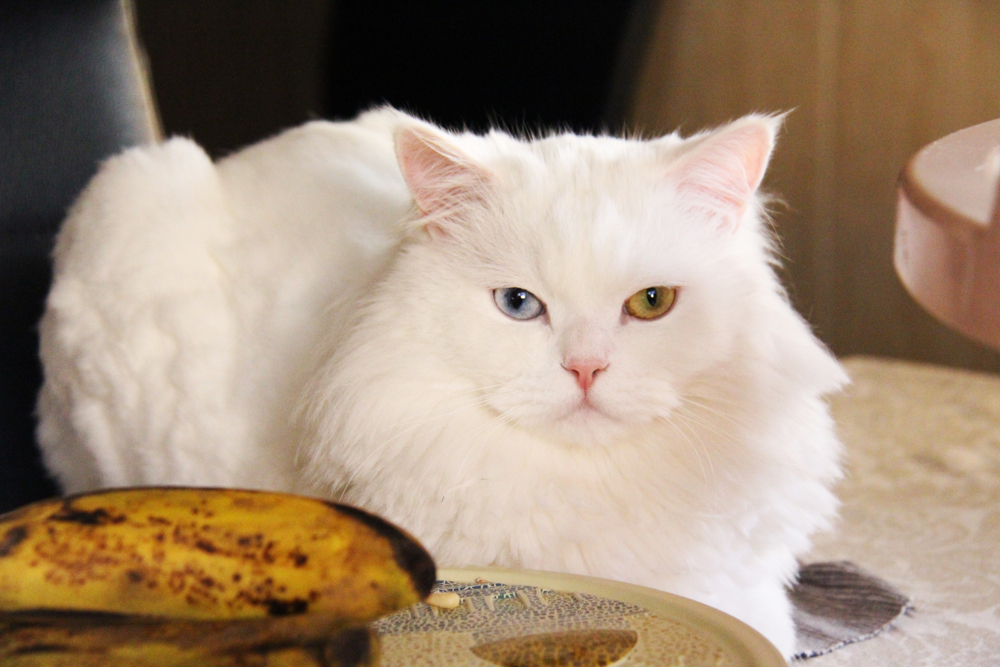
We’ve got another pretty kitty with a mysterious story of origin. Nobody knows where Shirazi cats came from, but we’ve got theories. Now, the most commonly accepted theory states that Shirazi cats were first brought to Europe in the 1620s by an Italian named Pietro Della Valle as a souvenir from Persia, now Iran.
Shirazi cats are super similar to Persian cats which would explain why the theory became widely acknowledged and accepted. With long, flowing smooth coats in varying patterns, such as tabby and blended bronze and golden, Shirazi cats took the world by storm.
With that out of the way, though, Shirazis are currently considered crossbreeds and aren’t registered with any organizations. Although they’re probably equipped with ancient Egyptian genes, Shirazis might not be the most ancient Egyptian cat breed ever.
7. Nile Valley Egyptian Cat

Nile Valley Egyptian Cats are hard to pin down, too. On one hand, they’re believed to be native Egyptian Maus and directly linked to ancient Egypt. On the other hand, though, they’re thought to be the “missing link” between the African wildcat and a fully domesticated cat.
Nile Valley Egyptian Cats are one of the few small spotted cats out there that weren’t bred by humans – they’re naturally occurring. We don’t have all the deets on these mysterious moggies, but we’re more than happy to give them the benefit of the doubt.
With their tender temperaments and curious natures that are similar to Maus, Nile Valley Egyptian Cats are incredibly intelligent and independent. Whether or not they’re ancient Egyptian cats, we believe that they deserve a place in the spotlight and a chance to prove themselves to the world.
